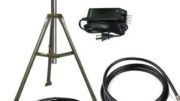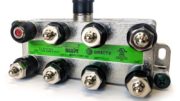The venerable WB68 multiswitch. Once upon a time, it graced the homes of every DIRECTV enthusiast with more than two DVRs. And back in the day, that was a lot of people. In 2009, SWM technology was born and ever since then the WB68 has been a thing of the past.
Or has it?
I got a call from a customer who was having problems installing his new DIRECTV satellite equipment. He was upgrading, and it turns out he was upgrading from some very old equipment. I’m always impressed by how well DIRECTV’s equipment holds up year after year. I always tell people that the outdoor equipment is designed to last 3-5 years but then I see dishes put up in the late 1990s that still work. It makes me feel like I’m working with the right company.
This customer had installed the latest SWM-enabled dish, using instructions from Solid Signal’s YouTube page. It worked perfectly with his new H25 receiver but when he went to hook up the rest of his system, nothing worked.
Was it just a case of old receivers?
I confirmed that the customer had SWM-capable receivers. I made sure he took off the B-Band converters that didn’t need to be there in the first place since the old dish wasn’t even HD. Still, nothing worked. Then he sent me a picture of his setup.

That’s when I saw it. He had connected the single line from his dish into one of the inputs on this ancient WB68 multiswitch. He hadn’t bought a proper SWM splitter thinking he already had a splitter. It turns out he thought the WB68 was a splitter.
It took a day to get him the right splitter, but he’s perfectly happy now.
So why doesn’t this work?
The WB68 is not a splitter even though it looks sort of like one. It’s a multiswitch. A multiswitch is a specific piece of equipment that takes multiple inputs and distributes them, as needed, to multiple outputs. The result can be that you have one satellite line in and eight out, but it all has to be designed to work right.
Old-school DIRECTV systems used a combination of different voltages and signals to send the right information down the cable. In a traditional system there are two different voltages that can be used, and a “tone” can be present on the line. With two voltages and tone on/off that means there are four different possibilities. This is needed because there is so much information that the cable can only carry a quarter of it at a time.
In a SWM multiswitch, up to 21 different receivers or DVRs can get signals using a single line. Each receiver or DVR gets only the signals it needs and the rest of the signals aren’t used at all. This means that everything can fit on a single cable.
When you put an old-school multiswitch in the mix on a SWM system, everything stops communicating. All of a sudden none of the devices know what do do with this new piece of equipment, and everything no longer works. The solution: Call your friends at Solid Signal and get the best advice on how to upgrade. The number is 888-233-7563. Or, check out our award-winning tutorials here.





